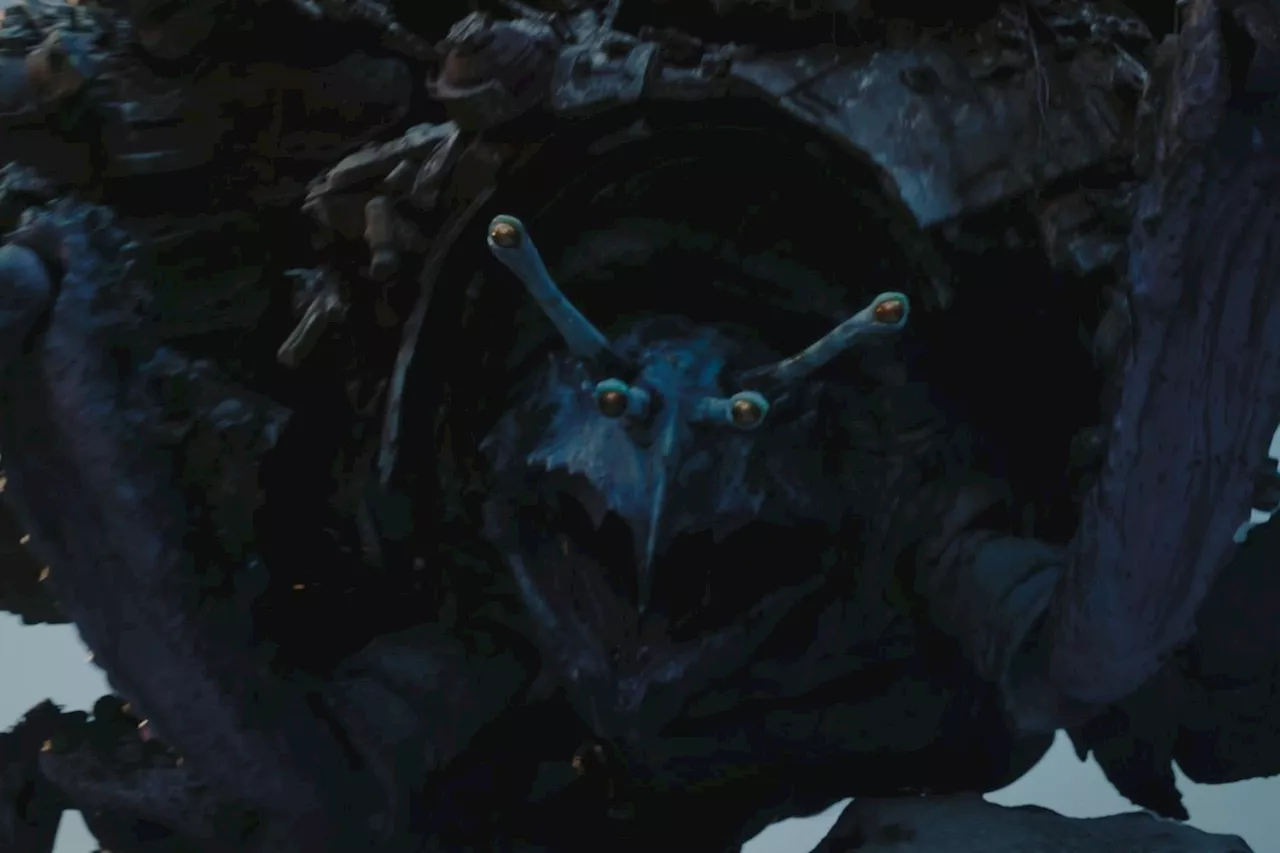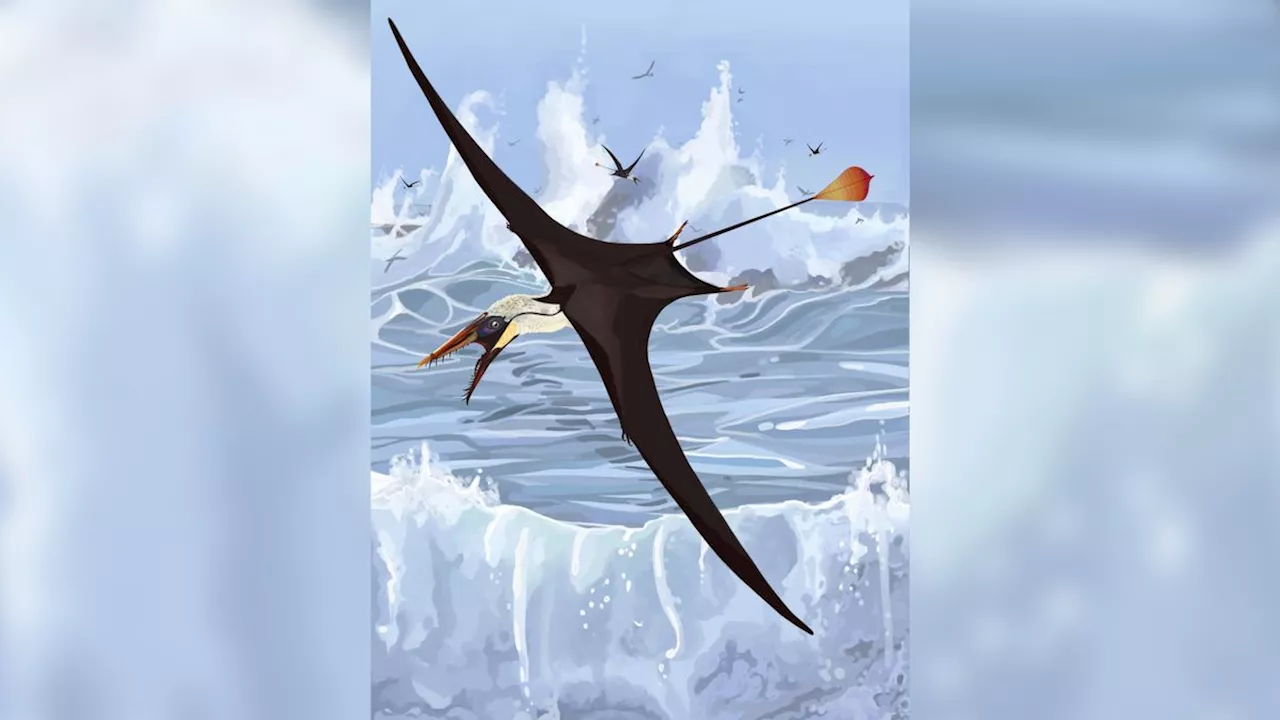A study of a large pterosaur fossil, previously considered a separate species, reveals it was likely a giant individual of a known species. Scientists analyzed the unique features of the fossil, concluding that its differences are consistent with growth and size variations within the species.
Scientists have spent over a century debating whether a large, anatomically unusual flying reptile fossil represented a distinct species from its smaller counterparts. A new study published January 2nd in the journal *Zoologia* concludes that it wasn't a separate species after all, but a particularly large individual of a known pterosaur that lived in parts of what is now Europe and Africa during the Jurassic Period , roughly 150 million years ago.
This pterosaur, one of the best-known with over 100 fossilized remains, typically had a wingspan of around 1 meter, comparable to a crow. However, a nearly complete fossil skeleton unearthed in the mid-1800s from limestone deposits in southern Germany stood out. This specimen had an eagle-like wingspan of 1.8 meters, over 60% larger than all but one of the largest known pterosaurs. Initially treated as a distinct species, doubts lingered about the giant fossil's classification, even after a 1995 proposal to merge all known specimens into a single species.Paleontologists David Hone from Queen Mary University of London and Skye McDavid conducted a comprehensive analysis of the enigmatic skeleton, scrutinizing its unique characteristics. While they found distinct features like proportionally smaller eye sockets and larger skull openings behind the eyes, they argue these variations align with the gradual changes in proportions observed in pterosaurs and other animals throughout their growth. The researchers suggest the supersized pterosaur may have also shifted its diet and habitat as it aged. While smaller pterosaurs ate tiny shrimp and fish, the colossal adult's broad, flattened teeth indicate a preference for larger prey, possibly venturing inland along rivers and estuaries. This age-related ecological niche separation, according to Hone, would have been largely unavoidable for large animals like pterosaurs and dinosaurs.The study sheds light on the growth and dietary adaptations of pterosaurs, helping researchers refine their understanding of these fascinating creatures. However, paleontologist Dave Unwin from the University of Leicester remains unconvinced about the dietary and habitat changes proposed by Hone and McDavid. He believes the pterosaur's anatomy is best suited for aquatic environments, and the skeletal and tooth differences are better explained by its larger size and build. Nevertheless, studies like this contribute to the growing body of knowledge about pterosaur biology, providing valuable insights into their evolution and life history
Pterosaur Fossil Jurassic Period Evolution Paleontology
United States Latest News, United States Headlines
Similar News:You can also read news stories similar to this one that we have collected from other news sources.
 Skeleton Crew‘s Giant Crab Monster Was a Practical Model Packed With Star Wars Easter EggsEpisode 6, 'Zero Friends Again,' is now on Disney+.
Skeleton Crew‘s Giant Crab Monster Was a Practical Model Packed With Star Wars Easter EggsEpisode 6, 'Zero Friends Again,' is now on Disney+.
Read more »
 Tianjin University Invites Overseas Young Scientists for 2025 Excellent Young Scientists Fund ProgramThe National Natural Science Foundation of China (NSFC) Excellent Young Scientist Fund (Overseas) program, hosted by Tianjin University, seeks to attract outstanding young scholars from overseas to contribute to China's scientific and technological advancement.
Tianjin University Invites Overseas Young Scientists for 2025 Excellent Young Scientists Fund ProgramThe National Natural Science Foundation of China (NSFC) Excellent Young Scientist Fund (Overseas) program, hosted by Tianjin University, seeks to attract outstanding young scholars from overseas to contribute to China's scientific and technological advancement.
Read more »
 Laser Study Reveals How Pterosaur Tails Maintained Stiffness for FlightResearchers used lasers to study pterosaur tail fossils and discovered a criss-crossing fiber and tube-like structure system that provided stiffness, allowing the tail to act like a sail for steering. This discovery sheds light on the sophisticated flight mechanisms of these ancient flying reptiles.
Laser Study Reveals How Pterosaur Tails Maintained Stiffness for FlightResearchers used lasers to study pterosaur tail fossils and discovered a criss-crossing fiber and tube-like structure system that provided stiffness, allowing the tail to act like a sail for steering. This discovery sheds light on the sophisticated flight mechanisms of these ancient flying reptiles.
Read more »
 Star Wars: Skeleton Crew Episode 5 References the InterGalactic Banking Clan's Troubling HistoryThis week's episode of Star Wars: Skeleton Crew features a spa on the planet Lanupa where security is heightened due to an InterGalactic Banking Clan summit. The episode nods to the organization's history in the Star Wars galaxy, particularly its involvement in the Clone Wars.
Star Wars: Skeleton Crew Episode 5 References the InterGalactic Banking Clan's Troubling HistoryThis week's episode of Star Wars: Skeleton Crew features a spa on the planet Lanupa where security is heightened due to an InterGalactic Banking Clan summit. The episode nods to the organization's history in the Star Wars galaxy, particularly its involvement in the Clone Wars.
Read more »
 Star Wars: Skeleton Crew Takes a Dark Turn With Shocking BetrayalStar Wars: Skeleton Crew continues to explore mature themes as the children's quest for home takes a dangerous turn. Jod, who initially presented himself as a Jedi, reveals a more complex and potentially sinister side, challenging Fern to a duel and holding a knife to her throat. This shocking betrayal raises questions about Jod's true motives and past.
Star Wars: Skeleton Crew Takes a Dark Turn With Shocking BetrayalStar Wars: Skeleton Crew continues to explore mature themes as the children's quest for home takes a dangerous turn. Jod, who initially presented himself as a Jedi, reveals a more complex and potentially sinister side, challenging Fern to a duel and holding a knife to her throat. This shocking betrayal raises questions about Jod's true motives and past.
Read more »
 Disney+ & Hulu Shows, Star Wars: Skeleton Crew, The Stanford Prison ExperimentThis article covers Disney+ and Hulu shows, the upcoming Star Wars: Skeleton Crew series, and the docuseries The Stanford Prison Experiment.
Disney+ & Hulu Shows, Star Wars: Skeleton Crew, The Stanford Prison ExperimentThis article covers Disney+ and Hulu shows, the upcoming Star Wars: Skeleton Crew series, and the docuseries The Stanford Prison Experiment.
Read more »
